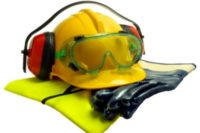Quick guide to selecting workplace PPE for eyes, face

Safety professionals in a wide range of industries are well aware of the importance of personal protective equipment (PPE).
When it comes to protecting eyes and faces, the employer or safety manager must assess the workplace and determine if there are hazards present that that necessitate the use PPE by workers. [29 CFR 1910.132(d)]
OSHA requires a hazard assessment to determine the risk of exposure to eye and face hazards, including those which may be encountered in an emergency. Employers should be aware of the possibility of multiple and simultaneous hazard exposures and be prepared to protect against the highest level of each hazard. [29 CFR 1910 Subpart I App B]
|
Hazard Assessment |
||
|---|---|---|
|
Hazard type |
Examples of Hazard |
Common Related Tasks |
|
Flying objects such as large chips, fragments, particles, sand, and dirt |
Chipping, grinding, machining, masonry work, wood working, sawing, drilling, chiseling, powered fastening, riveting, and sanding |
|
|
Anything emitting extreme heat |
Furnace operations, pouring, casting, hot dipping, and welding |
|
|
Splash, fumes, vapors, and irritating mists |
Acid and chemical handling, degreasing, plating, and working with blood |
|
|
Harmful dust |
Woodworking, buffing, and general dusty conditions |
|
|
Radiant energy, glare, and intense light |
Welding, torch-cutting, brazing, soldering, and laser work |
|
Source: OSHA
Looking for a reprint of this article?
From high-res PDFs to custom plaques, order your copy today!









